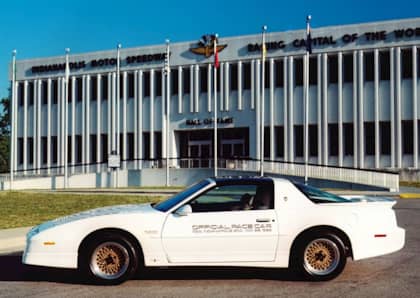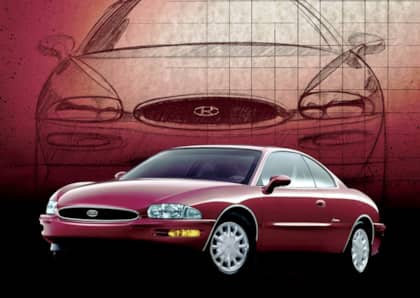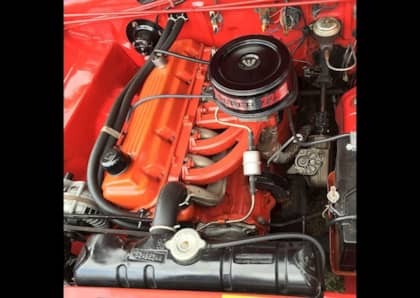5 Turbo Buicks That Paved The Way For The GNX
The Buick Grand National—and more specifically, the GNX—have a well-deserved reputation for providing outstanding '80s turbocharged power wrapped in a menacing all-black package. The path to the Grand National, however, is littered with turbo Buicks that haven't been given the same share of the spotlight. They're mostly carbureted cars that pioneered the use of forced induction for the domestic brand before it all came together in the fuel-injected Grand National and GNX packages.
Let's take a look at the turbo Buicks that paved the way for the GNX's high performance dominance by the middle of the decade.
1. 1976 Buick Century Indy Pace Car

Buick had paced the Indianapolis 500 in 1975, but it had done so using a vehicle motivated by a 455-cubic inch big block V8. For '76, that simply wasn't an option, as even the not-so-stock version of this motor couldn't offer the top end acceleration that was required on the track, so Buick decided to get creative with its 231-cubic inch, 3.8L V6. By slapping on a turbocharger that pushed out a whopping 20 lbs of boost, this carbureted six significantly outperformed the V8 when pushing past 90 mph, thanks to its 306hp (a hefty figure in the EPA-choked '70s).
The engine itself had an interesting history, with the design having been sold by Buick to Kaiser-Jeep in 1967 before being purchased back from new owner AMC by Buick once again in a bid to provide a more efficient, small-displacement option across its line-up. Although it would become the backbone of the brand's future turbocharging efforts, the Pace Car replicas sold to the public had either traditional 350-cubic inch V8s under the hood, or a much weaker naturally aspirated version of the 3.8L pushing out a third the horsepower.
2. 1978-1987 Buick Regal Sport Coupe/T-Type

1978 marked the year that the Regal first received a turbocharged drivetrain. Still carbureted, a 3.8L mill similar to that which had been used for the Century Pace Car was offered in the Sport Coupe model. Tuned to deliver 165hp and 285 lb-ft of torque (when equipped with a four-barrel carb, the two barrels dropped 15 and 40hp, respectively), the emphasis from Buick was still on efficiency, with the goal of providing eight cylinder power with six cylinder fuel consumption. Buick also introduced a knock sensor linked to an electronic spark control feature that would dial back ignition timing to prevent detonation, an innovative feature for the era.
The Regal maintained turbo power as a feature all the way until the GNX ended the party in 1987 (with the transition to the T-Type nomenclature occurring in 1983, and the addition of the Grand National model in 1984). Its power rating also shifted to 170hp/265 lb-ft of torque after a new head design was introduced in 1979, but the Regal T-Type returned to glory—180hp and 280 lb-ft of torque—in 1983 thanks to revised exhaust headers. T-Types transitioned to the same 200hp/300 lb-ft of torque, fuel injected versions of the 3.8L motor introduced in the Grand National in 1984.
3. 1978-1981 Buick LeSabre Sport Coupe

The turbo Regal's drivetrain was also on offer in the 1978-1981 Buick LeSabre Sport Coupe, with the latter downsized from its previous boat-like footprint (and without the need for the Regal's hood bulge to make it all fit). The Regal SC was far more popular than the LeSabre option, although the turbo was a full second faster to 60 mph than its standard V8 LeSabre. Fewer than 2,500 Turbo Coupe LeSabres were produced in total, compared to the tens of thousands of turbocharged Regals that sold during the same period.
The LeSabre lost its turbo street cred after the 1981 model year, but experienced an unusual coda in 1986 as part of Buick's strategy to add another vehicle to its NASCAR repertoire (alongside the Regal). To do this, it had to build a small number of street legal versions of its race car to satisfy the sanctioning body, and so the Buick LeSabre Grand National was born, a front-wheel drive H-body platform coupe. Sadly, despite the Grand National name, it never benefited from a turbo of its own, as the goal behind the limited sub-120 car run was to homologate a number of aero changes (including smaller rear windows) made to the LeSabre body to further improve its slippery nature on a track.
4. 1979-1981 Buick Century Turbo Coupe

Despite having been the forefather of Buick's turbo renaissance, the Century didn't gain a Turbo Coupe variant until 1979, a year later than its line-up mates, and a full three years after it had paced the Indy 500. Confusingly, there was also a "Sport Coupe" Century that offered a meager 3.2L V6, with the turbo reserved for the "Turbo Coupe," where it trumped the output found in its Regal and LeSabre siblings thanks to a better exhaust system design (175hp/275 lb-ft of torque). The Century was offered in both coupe and sedan editions, with the turbocharged engine, until 1981, when it became sedan only before transitioning to all-new platform in 1982 that left turbos behind.
5. 1979-1985 Buick Riviera

The Buick Riviera was the brand's flagship luxury car, and for 1979 it was completely redesigned to take advantage of a new front-wheel drive setup that, at the time, was touted as the leading edge of automotive modernity. It was only natural that the Riviera be granted access to the company's turbo toy chest and given its own version of the 3.8L V6.
Originally known as the S-Type from '79-'80 before transitioning to the T-Type naming scheme that lasted until 1985, the turbo Riviera's motor was fairly different from its predecessors in order to meet the packaging requirements of its front-wheel drive platform (including moving the turbo to the rear of the intake). Right out of the box—again, thanks to a free-flowing exhaust—the S-Type Riviera enjoyed a power boost over all other turbo Buicks, putting down 185hp and 280 lb-ft of torque. Another five horsepower were added in 1980, and while torque would dip somewhat in '81, it climbed back to 290 lb-ft by 1983.
A turbo Buick paced the Indy 500 once more in 1983 using a Riviera convertible, but one that featured a highly modified blown 4.1L V6 that never made it onto the street. By 1984 the move to sequential fuel injection, as with the Regal, pushed the 3.8L's output to 190hp and 300 lb-ft of torque, where it stayed until the end of its run.











